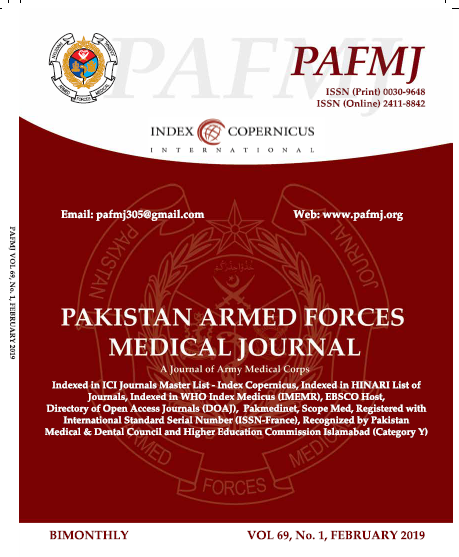DIAGNOSTIC ACCURACY OF PLASMA LACTATE IN NEONATAL BIRTH ASPHYXIA
Keywords:
Plasma lactate, Neonatal birth asphyxia, Diagnostic accuracyAbstract
Objective:
To find out the diagnostic accuracy of levels of plasma lactate in neonatal birth asphyxia by taking pH as gold standard. Study Design: Cross sectional validation study. Place and Duration of Study: The study was conducted at Paediatrics Department, Pak Emirates Military Hospital Rawalpindi, from May to Nov 2013.
Material and Methods:
Two Hundred and forty neonates were selected through non-probability purposive sampling after informed consent from parents by inclusion and exclusion criteria. The sample size was calculated by WHO calculator. The plasma lactate and pH of the neonates were taken within first six hours of delivery of child. The samples were sent in heparinized containers along with ice packs and were stored at 0°C to -2°C.
Results:
Gestational age of 52.5% (n=126) neonates was between 34-37 weeks while 47.5% (n=114) was between 38-40 weeks with a mean of 37.75 ± 2.91 weeks. Gender distribution among neonates showed that 58.75% (n=141) male and 41.25% (n=99) females. The diagnostic accuracy of plasma lactate in neonatal birth asphyxia by taking pH as gold standard showed 194 (80.83%) true positive, 7 (2.92%) false positive, 31 (12.92%) true negative and 8 (3.33%) were false negative. The test has sensitivity = 96.04%, specificity = 81.58%, positive predictive value= 96.52%, negative predictive value = 81.58% and accuracy of 93.75%.
Conclusion:
There was a higher diagnostic accuracy of plasma lactate by taking pH as gold standard for the diagnosis of neonatal birth asphyxia.











